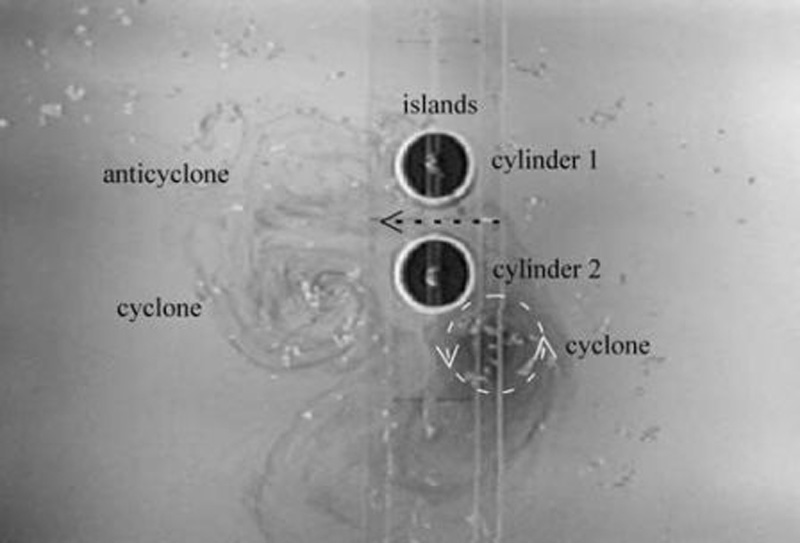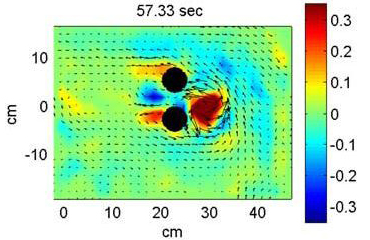Vortices
Mesoscale vortices play a primary role in the redistribution and transport of heat and water properties around the oceans. For example, they are one of the mechanisms for transporting the upper ocean equatorial and South Atlantic water into the North Atlantic as part of the Meridional Overturning Cell. Therefore they are an important element of the global thermohaline circulation and a fundamental component of the global climate system.
The interaction of vortices with seamounts, submerged ridges, or islands might result in an enhanced and localized transfer of water properties. For example, most Meddies (Mediterranean water eddies) collide with major seamounts and North Brazilian Current rings interact with the Lesser Antilles island chain. An important result, obtained when I was a postdoc, indicated that a vortex interacting with an island can split into two vortices (Cenedese 2002). In a collaboration with Claudia Adduce (Undergraduate Guest Student), we showed that such interaction is influenced by the details of the island/seamount geometry (Adduce & Cenedese 2004), and that, in the presence of two islands a dipole can form on the leeside of the gap between the islands (Cenedese et al. 2005). The latter result and previous studies suggest that an eddy interacting with an island chain can split into multiple eddies and/or generate multiple dipoles. However, the results of a laboratory study in collaboration with Aya Tanabe (GFD Summer Student Fellow) showed that only one dipole can form when an eddy interacts with an island chain, regardless of the number of gaps (Tanabe & Cenedese 2008). Furthermore, when the gap width is smaller than the horizontal boundary layer thickness, no vortex or dipole was observed to form downstream of the gap between the islands.

Dipole formation downstream of two islands in an experiment in which the original vortex was dyed. (Cenedese et al., 2005)

Velocity (arrows) and vorticity (color, s-1) fields for an experiment in which dipole formation was observed. (Cenedese et al., 2005)
References
Adduce, C., and Cenedese C., 2004. Laboratory experiments on a mesoscale vortex colliding with topography of varying geometry. J. Mar. Res., 62, 611-638.
Cenedese, C., 2002. Laboratory Experiments on Mesoscale Vortices Colliding with a Seamount. J. Geophys. Res., 107, C6, 10.1029/2000JC000599.
Cenedese, C., Adduce C., and Fratantoni D.M., 2005. Laboratory experiments on mesoscale vortices interacting with two islands. J. Geophys. Res., 110, C09023, 10.1029/2004JC002734.
Tanabe, A., and Cenedese C., 2008. Laboratory experiments on mesoscale vortices colliding with multiple islands. J. Geophys. Res., 113, C04022, doi:10.1029/2007JC004322.